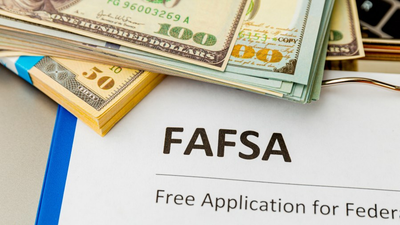
(The Hill) – New Free Application for Federal Student Aid (FAFSA) forms — typically dreaded by college hopefuls and their families — will soon be available after a makeover, including some exciting and controversial features.
The forms, which will drop on or before Sunday, intend to be easier and quicker to fill out, but they're also coming fairly late in the college application season. FAFSA papers normally open up in October, and the timing is raising concerns for experts and students.
“When students and families fill out the better FAFSA form, they will find that applying for college financial aid is simpler, easier, and faster than ever before,” said Secretary of Education Miguel Cardona. “The Biden-Harris Administration’s implementation of the Bipartisan FAFSA Simplification Act modernizes an archaic system, simplifies the form, and improves access for underserved students — representing the most significant overhaul of the federal financial aid application since the Reagan era.”
Here is what to know about the new forms:
Financial information is easier to obtain
On the new FAFSA form, the student and their contributors must consent to allow the Department of Education to access IRS tax data.
Information about income and finances previously had to be inputted manually, which was a struggle for many families having to find the documents and ensure accuracy.
"There's going to be this thing called a direct data exchange where they're just going to provide their consent to the Department of Education to ping the IRS and get all of their tax information directly entered into the FAFSA,” said Jill Desjean, senior policy analyst for National Association of Student Financial Aid Administrators.
The connection with the IRS will also allow the form to be shorter since fewer financial questions will need to be asked.
The Education Department said the questions will go from 108 to around 50, with some applicants having to complete as few as 18.
“I think that's the really big win with the new FAFSA is there a direct data exchange with the IRS so that people don't have to manually enter a bunch of data,” Desjean said.
More people qualify for Pell Grants
The new adaptation will make it so more than 600,000 additional students will qualify for Pell Grants this year.
The increase in Pell Grant recipients is due to changes in the calculation for the award, making it so 1.5 million students could receive the full $7,395 grant.
“These bold changes will ultimately put affordable higher education within reach of more Americans, including 610,000 students from low-income families who will become eligible for Pell Grants for the very first time,” Cardona said.
Financial aid for students who receive money for college from family or a 529 college savings plan will also no longer decrease due to the gifts. Previously, if a student was given money through these means they would not receive as much aid from the government.
However, the new form also takes away the discount families used to receive for having multiple children in college.
The forms are coming out late
The new FAFSA forms will not be out until the end of December when they are typically released in October.
Additionally, all college students will have to refill out new FAFSA forms since the information could not be transferred from the old system.
“This is adding some stress for people to the financial aid process because they'd like to kind of check that box to get the FAFSA out of the way and, unfortunately, we're all still kind of waiting for that to be released so they can fill it out,” Desjean said.
And what students and families need to understand, she added, is that even after they complete the form it takes schools a couple of weeks to receive the information.
This means it will take more time for schools to release financial aid offers, giving applicants less time to make decisions on institutions.
“If you're going to a selective school that requires you to make a deposit by a certain date, your school is not going to have a very long time to make your financial aid offer to you. The whole timeframe where you sort of get your financial aid offers, compare them and then decide which school you want to go to and commit to, that timeframe is really compressed this year,” Desjean said.
The most important thing students can do, she added, is to fill out the FAFSA form as soon as they can and pay attention to deadlines.